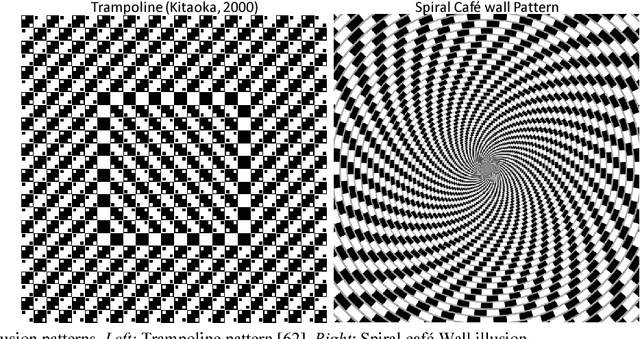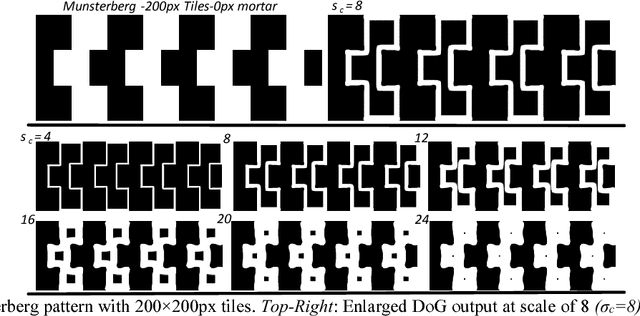Trent W. Lewis
Bioplausible multiscale filtering in retino-cortical processing as a mechanism in perceptual grouping
Sep 13, 2017



Abstract:Why does our visual system fail to reconstruct reality, when we look at certain patterns? Where do Geometrical illusions start to emerge in the visual pathway? How far should we take computational models of vision with the same visual ability to detect illusions as we do? This study addresses these questions, by focusing on a specific underlying neural mechanism involved in our visual experiences that affects our final perception. Among many types of visual illusion, Geometrical and, in particular, Tilt Illusions are rather important, being characterized by misperception of geometric patterns involving lines and tiles in combination with contrasting orientation, size or position. Over the last decade, many new neurophysiological experiments have led to new insights as to how, when and where retinal processing takes place, and the encoding nature of the retinal representation that is sent to the cortex for further processing. Based on these neurobiological discoveries, we provide computer simulation evidence from modelling retinal ganglion cells responses to some complex Tilt Illusions, suggesting that the emergence of tilt in these illusions is partially related to the interaction of multiscale visual processing performed in the retina. The output of our low-level filtering model is presented for several types of Tilt Illusion, predicting that the final tilt percept arises from multiple-scale processing of the Differences of Gaussians and the perceptual interaction of foreground and background elements. Our results suggest that this model has a high potential in revealing the underlying mechanism connecting low-level filtering approaches to mid- and high-level explanations such as Anchoring theory and Perceptual grouping.
 Add to Chrome
Add to Chrome Add to Firefox
Add to Firefox Add to Edge
Add to Edge